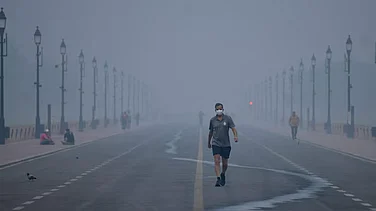The First Red Flag
It’s been a long way from Shyamla to Simla to Shimla for the ‘middling-sized village’ visited by British travellers over two centuries ago. The sprawling capital of Himachal Pradesh, which spreads out at an elevation ranging from 6,000 to 7,000 feet, recently hit the headlines for all the wrong reasons with incessant rains leading to the death of over 50 residents due to landslides, and massive destruction of property.
Since the period I was posted in Shimla four decades ago, the population of the ‘Queen of the Hills’ has swelled from one lakh to nearly three lakh. The first red flag was, however, raised by the British rulers way back in the 1930s, when they found that the population had crossed 15,000 while the infrastructure was enough only for that much population. Several restrictions were placed on construction activities and hundreds of applications for new constructions were rejected then.
Haphazard Growth
Undoubtedly, the area of the township has also increased and it has spread from Summer Hill to beyond Dhalli but the population density in the central parts of the town has been sharply increasing. Nowadays, it is difficult to find trees in its core areas like the Mall, the Ridge and the Lower Bazar.
The first sinking of land near the Ridge was reported in 1942 around the Lakkar Bazar area. Subsequently, in 1956, creeping movement or sinking of land was reported from various areas like Barnes’ Court, Rockery and Rooknest.
To quote from my book Shimla: Then and Now, “At the time of the construction of the water tank under the Ridge and its subsequent extension following a fire…the soil excavated from the tank was dumped to level and extend the Ridge. The bitumen coating over the Ridge and above the water tank is two feet thick and no damage was caused to it but the slides and cracks in the adjoining area, particularly towards the Lakkar Bazar during 1965, 1971 and 1974 caused panic among the residents of Shimla.”
Since then, there have been several instances of landslides and cracks but one thing that stands out is that century-old buildings like the Viceregal House, which now houses the Indian Institute of Advanced Studies and Barnes Court, where the Raj Bhavan is located (home to at least seven governor generals and viceroys during British rule and the venue where the trial in the Mahatma Gandhi assassination case was conducted and Nathuram Godse was sentenced); and the iconic Groton Castle, which houses the offices of the Principal Accountant General, have withstood the vagaries of nature.
Even four decades ago, when the population was just about one lakh, environmentalists had expressed serious concern over the town’s haphazard growth. The ban on constructions over the natural flow of water was followed more in violation and little consideration was given to the structural strength of the buildings. Also, there were no restrictions on the vertical construction of buildings with at least one allowed to construct eleven storeys. Another serious concern related to permission for constructing buildings at over a 60º slope while experts recommend a maximum of a 45º slope on which residential houses or other buildings should be allowed to be constructed.
Almost all the buildings damaged and destroyed in the recent rains were new constructions and located on or along natural water-drainage systems. Evidently, no consideration was given to the natural flow of water when permission for construction was given. A majority of buildings which collapsed were constructed on steep slopes and were blocking the natural flow of water. Video clips of buildings sliding down shall remain in public memory for a long time to come.
Time to Act
The disaster was waiting to happen and worse can come to pass unless the government wakes up and enforces strict rules for construction activities besides conducting a structural audit of all existing buildings.
Things appeared bad when I was posted in Shimla with constant reports of minor landslides and cracks on roads resulting in demands for strict regulation of building activity. Evidently, nothing much has been done and each election to the Shimla Municipal Corporation has led to more and more violations by way of largesse given as pre-poll concessions. It is worse now and the recent tragedy must shake up the government to take firm steps or it will be too late.
Vipin Pubby is a senior journalist, political analyst and author of the book Shimla: Then and Now























